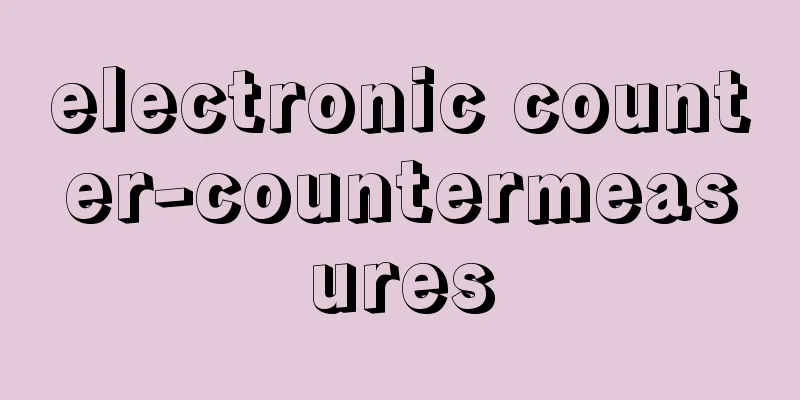Mass movement

|
Most commonly, it refers to collective actions of people that are sustained or temporary for a certain period of time in order to achieve specific economic, political, social, or cultural demands or goals. However, in practice, it is often used with the following four limitations. First, mass movements are sometimes considered to be synonymous with collective actions based on class interests, i.e., social movements in the narrow sense. Secondly, it can mean other collective actions excluding collective actions based on class interests. Thirdly, movements of mass organizations that are distinct from political parties can be called mass movements, such as when the distinction and relationship between political parties and mass organizations is an issue in the context of the socialist movement. And fourthly, it can be considered to refer to a wide range of collective actions of people that include not only movements that directly reflect class interests after the establishment of mass society, but also those that include them. Each way of thinking has its own basis, but the fourth definition is probably the most common at present. [Yazawa Shujiro] Conditions for the emergence of a mass movementFor a mass movement to emerge and become significant, the following changes in social and political structure are essential. First of all, communities that bind people to narrow ties of blood, land, and individual human relationships must collapse, urban societies must form, and people must become functional members of that society as a mass. Secondly, in urban and mass societies, for effective governance and for the realization of a better life, everything in daily life must be politicized, and everything from the economy to social welfare, the social environment, education, and culture must be made into political issues. Therefore, conditions such as transportation and communication means and the expansion of the public sphere must be in place that enable people to unite around issues according to attributes such as class, occupation, sex, and generation. Finally, it is necessary to point out the changes in political structure that have forced a fundamental revision of the political framework of modern civil society. Politics in modern civil society was carried out in the form of rational debates in parliaments between citizens with "education and wealth" through political parties. However, as the overwhelming masses began to enter politics, traditional parliamentary politics became dysfunctional, and political parties and parliaments were forced to undergo fundamental changes.Indeed, many improvements were made to them, but the demands of the masses still lacked a means to satisfy them, and mass movements emerged to realize these demands, significantly expanding the political world. [Yazawa Shujiro] Structural AttributesConcerning the structural characteristics of mass movements, I would like to limit myself to the following four points. First, a structural rift is likely to occur between the full-time workers who are consistently involved in mass movements and make a living from them, and the majority of the masses, making it easy for the former to dominate the latter. Second, the core that unites the masses in a movement is none other than ideology, but this very ideology can tend to encapsulate the masses and prevent them from keeping up with the dynamically unfolding reality, and as a result, it can put a brake on the movement. Third, mass movements cannot help but have an extremely delicate relationship with party movements. This is because political parties always try to bring mass movements under their control, and if a movement dislikes this and completely breaks off ties with political parties, then the cohesiveness and effectiveness of the movement can be impaired. And fourth, the mass movement has two aspects: the positive aspect of satisfying the everyday demands of the masses, and the extraordinary aspect of liberating the extraordinary passions and emotions of the masses. When these four problems are solved effectively, the mass movement will be able to exert its power at its best. [Yazawa Shujiro] Today's IssuesHistorically, the first major mass movement to emerge after the collapse of bourgeois civil society was the labor movement. The labor movement spread with the development of industrial society and also played an important role in the formation of socialism. Then, in the interwar period, mass movements under fascism were established in several countries. These movements were mainly driven by the middle class, who had lost their livelihoods in the midst of rapid social change, and were characterized by their skillful organization of the irrational emotions of the masses. After World War II, the labor movement once again formed the core of mass movements, but with the advancement of capitalism and the emergence of the "affluent society," new changes occurred in both the issues of the movement (human rights, welfare, pollution, environment, ecology, culture, etc.) and the subjects of the movement (young people, women, white-collar workers, professionals, the elderly, etc.), and so-called new social movements emerged. Furthermore, since the end of the 20th century, global social movements have been emerging, based on the fact that all the important problems facing humanity can only be solved at the global level. These movements are not political or economic movements, but rather movements for changing values and the code of social management. In this respect, the importance of residents' and citizens' movements is increasing. Of course, politically, the connection between political and labor movements and these movements is an important issue today. [Yazawa Shujiro] "The Politics of Mass Society, by W. Kornhauser, translated by Akira Tsujimura (1961, Tokyo Sogensha)" ▽ "Man and Society in Transition, by K. Mannheim, translated by Naoyuki Fukutake (1962, Misuzu Shobo)" ▽ "Mass Movements, by E. Hoffer, translated by Masaaki Takane (1969, Kinokuniya Shoten)" ▽ "Nomads Living in the Present: Towards the Creation of a New Public Space, by A. Melucci, translated by Yasushi Yamanouchi, Yoshiyuki Takado, and Kasumi Miyazaki (1997, Iwanami Shoten)" [References] | | | | |Source: Shogakukan Encyclopedia Nipponica About Encyclopedia Nipponica Information | Legend |
|
もっとも普遍的には、特定の経済的、政治的、社会的、文化的な要求や目標を達成するために、一定期間持続的あるいは一時的に展開される人々の集合行動のことをいう。しかし実際には、以下のような四つの限定を付されて使われることが多い。第一に、階級的利害に基づく集合行動すなわち狭義の意味での社会運動と同義なものとして大衆運動を考える場合がある。第二に、階級的利害に基づく集合行動を除いたその他の集合行動を意味することがある。第三に、社会主義運動の文脈において政党と大衆組織の区別と関連が問題とされる場合のように、政党から区別された大衆組織の運動を大衆運動とよぶことがある。そして第四に、大衆社会成立以降の、直接階級的利害を反映した運動だけではなく、それをも含んだ人々の広範な集合行動を大衆運動とよぶことが考えられる。どの考え方もそれなりの根拠をもつが、現在では第四の定義がもっとも一般的であろう。 [矢澤修次郎] 大衆運動派生の条件大衆運動が派生し重要な意味をもつようになるためには、次のような社会・政治構造上の変化が不可欠である。なによりもまず、人々を狭い血縁、地縁、個別的人間関係に縛り付けている共同体が崩壊し、都市社会が形成されて、人々がマス(大衆、量)としてその社会を機能的に構成するようにならなければならない。次に、その都市社会、大衆社会において、有効な統治のためにも、よりよい生活の実現のためにも、日常生活の隅々に至るまであらゆるものが政治化し、経済はいうまでもなく、社会福祉、社会環境、教育、文化に至るまでいっさいのものが政治争点化することが可能でなければならない。したがってまた、人々が階層、職業、性、世代などの属性に従ってその争点に向かって大きく結合していくことを可能にするような、交通・コミュニケーション手段、公共圏の拡大などの条件が整っている必要がある。そして最後に、これまでの近代市民社会の政治的枠組みが根本的に修正を迫られた政治構造上の変化を指摘しておかなければならない。近代市民社会の政治は、「教養と財産」をもった市民が、政党を媒介しながら議会で理性的な討論を闘わせる形で行われた。しかし、圧倒的な大衆が政治に登場するようになると、もはや従来の議会政治は機能不全に陥り、政党と議会は根底的な転換を迫られ、実際それらには多くの改良が施されたが、それでもなお充足のための回路を欠いた大衆の要求を実現せんとして大衆運動が登場し、政治の世界を著しく拡大したのである。 [矢澤修次郎] 構造上の特質大衆運動の構造上の特質については、以下の4点のみを指摘するにとどめたい。第一は、大衆運動を終始一貫して担い、それによって生活をたてている専従者と、大多数の大衆の間には構造的な断絶が生じやすく、前者の後者に対する支配が発生しやすいということである。第二は、運動において大衆を結集せしめる核はイデオロギーにほかならないが、その当のイデオロギーは、ややもすると大衆をそのカプセルの中に閉じ込めて、動的に展開する現実についていけなくしてしまい、結果としてその運動にブレーキをかける可能性をもっているということである。第三は、大衆運動は政党運動ときわめて微妙な関係にたたざるをえないということである。というのは、政党はつねに大衆運動を自らの支配下に置こうとし、運動がそれを嫌って政党とまったく断絶してしまうと、今度は、運動の凝集性、有効性が損なわれる可能性が待ち受けているからである。そして第四は、大衆運動が、大衆の日常的要求を充足するという積極的な面と、大衆の非日常的な情念、情動を解放するという非日常的な面の二側面をもっているということである。これら四つの問題点をうまく解決したとき、大衆運動はその力をもっともよく発揮するであろう。 [矢澤修次郎] 今日的課題歴史的にみた場合、ブルジョア市民社会の解体以降最初に現れた主要な大衆運動は労働運動であった。労働運動は、産業社会の展開とともに広がりをみせ、かつまた社会主義の形成においても重要な役割を果たした。続いて両大戦間期には、いくつかの国々においてファシズム下の大衆運動が成立した。それは、急激な社会変動のなかで生活基盤を失った中産階級などをおもな担い手としたものであり、大衆の非合理的情動をうまく組織化したところに特徴があろう。第二次世界大戦後は、ふたたび労働運動が大衆運動の中軸を形成したが、資本主義の高度化、「豊かな社会」の出現のなかで、運動の課題(人権、福祉、公害、環境、エコロジー、文化など)、運動の主体(若者、女性、ホワイトカラー、プロフェッショナル、老人など)の両面で新しい変化がおこり、新しい社会運動とよばれるものが出現した。また20世紀末以降は、人類の直面する重要問題はすべて地球社会のレベルでしか解決できないという事態を踏まえて、グローバル社会運動が台頭してきている。これらの運動は、政治・経済的運動というよりもむしろ価値の変革運動、社会運営のコードの変革運動の様相を呈している。この点で住民運動、市民運動の重要性が増大している。もちろん政治的には、政治運動、労働運動とそれらの運動との連関が今日的課題として重要であろう。 [矢澤修次郎] 『W・コーンハウザー著、辻村明訳『大衆社会の政治』(1961・東京創元社)』▽『K・マンハイム著、福武直訳『変革期における人間と社会』(1962・みすず書房)』▽『E・ホッファー著、高根正昭訳『大衆運動』(1969・紀伊國屋書店)』▽『A・メルッチ著、山之内靖・貴堂嘉之・宮崎かすみ訳『現在に生きる遊牧民(ノマド)――新しい公共空間の創出に向けて』(1997・岩波書店)』 [参照項目] | | | | |出典 小学館 日本大百科全書(ニッポニカ)日本大百科全書(ニッポニカ)について 情報 | 凡例 |
<<: Popular Entertainment - Taishuuengei
Recommend
Eifukuji Temple
This independent temple is located in Taishi-cho,...
Algazel - Arugazel
Ghazali's Latin name. Source: About Shogakukan...
Mantova (English spelling)
The capital of the province of Mantua in Lombardy...
Toji Kawajiri
1908-1932 A children's book illustrator from ...
Sanandaj (English spelling)
The capital city of Kurdistan province in western ...
Ryoke
The title of the lord of a manor in the manor sys...
Skating - Suketo (English spelling) ice skating
A sport in which skaters skate on ice wearing ska...
Tarfaya
…Although it was repeatedly invaded by the region...
Papio ursinus (English notation) Papioursinus
… [Takashi Furuichi]. . … *Some of the terminolog...
Imperfect competition
A general term for a type of competition that is ...
Amarume Oil Field
An oil field located in Shonai Town, Higashitagawa...
Kamiyoke - Guardian
...A ceremony in which three-year-old boys and gi...
Charles VI
1368‐1422 The fourth king of France of the Valois ...
Eurya emarginata (English spelling)
… [Susumu Ishizawa]. … *Some of the terminology t...
Atvisari - Atobisari
A small animal belonging to the Arthropoda phylum...









